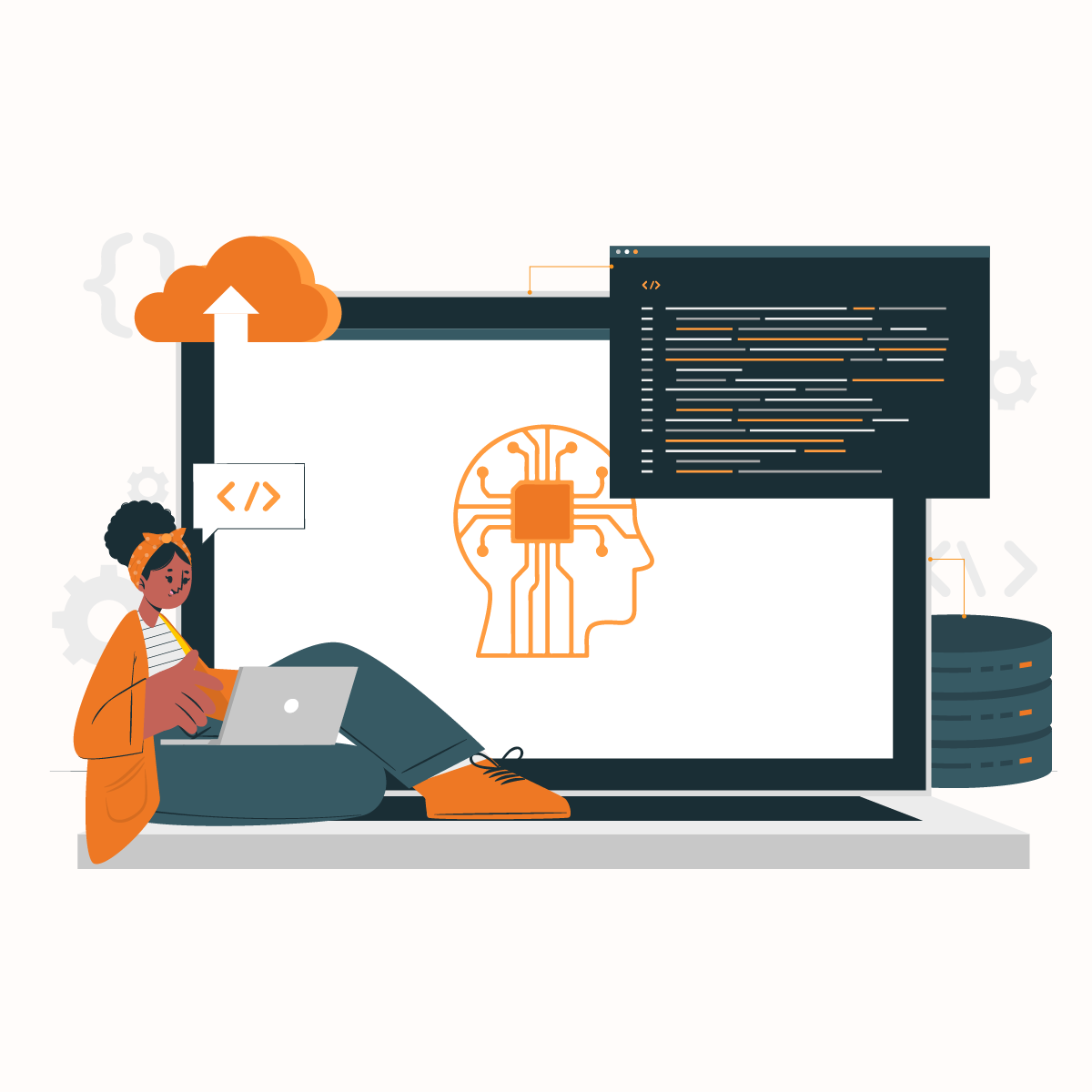Training artificial intelligence (AI) and large language models (LLMs) is no longer limited to large tech companies with access to massive proprietary datasets. With the explosion of publicly available content online, organizations now have the ability to train AI on web data—unlocking powerful, domain-specific capabilities that traditional models may lack.
Whether you’re fine-tuning a chatbot, developing a recommendation engine, or building an internal knowledge assistant, web data provides a rich, ever-evolving foundation. But collecting this data isn’t as simple as running a few scripts. From content diversity and legal compliance to IP blocks and geo-restrictions, training AI on web data introduces both opportunities and challenges.
That’s where NetNut comes in. As a leading provider of residential, mobile, and rotating proxies, NetNut empowers developers and data engineers to collect high-quality web data at scale—securely, ethically, and without being blocked. In this guide, we’ll explore why and how to train AI and LLMs using web and company data, the best practices to follow, and how NetNut can streamline your data acquisition pipeline.
Why Train AI Models with Web Data?
The web is a vast, ever-expanding ocean of unstructured knowledge. Unlike curated datasets, web data reflects real-world, real-time language across domains, making it one of the most valuable resources for building smarter, more adaptable AI systems.
Key Benefits of Training AI on Web Data:
- Real-Time Relevance: Web data is constantly updated, allowing models to stay current with emerging trends, slang, events, and terminology.
- Domain-Specific Customization: Train models on niche topics—like legal, medical, financial, or eCommerce content—by sourcing data directly from industry-specific sites.
- Multilingual and Regional Reach: Scrape localized content for multilingual training or translation models.
- Scale and Variety: From news and blogs to forums and product listings, the diversity of content types boosts a model’s robustness.
Publicly available data—from Reddit discussions to government websites—can dramatically improve your model’s ability to generalize and generate relevant output. And when you combine that data with NetNut’s geo-targeted proxies, you can unlock region-specific insights that would otherwise remain inaccessible.
Understanding the AI Training Pipeline
Training an AI or LLM involves more than just feeding it data. The process is a series of carefully orchestrated steps designed to ensure that the model not only understands the content but can use it to generate coherent, accurate, and valuable outputs.
The Key Stages of the AI Training Pipeline:
- Data Collection
- Sourcing data via scraping, public APIs, or company documents.
- Using proxies to avoid detection and access geo-restricted content.
- Preprocessing and Cleaning
- Removing noise, HTML, boilerplate, or duplicate content.
- Structuring data into usable formats like JSON or tokenized sequences.
- Data Storage
- Organizing and versioning datasets for easy retrieval and reuse.
- Using formats like Parquet, CSV, or text for scalable ingestion.
- Model Training or Fine-Tuning
- Training from scratch (requires huge datasets) or fine-tuning existing open-source models (e.g., LLaMA, Mistral, GPT-J).
- Optimizing hyperparameters, training steps, and batch sizes.
- Evaluation and Deployment
- Testing model outputs for accuracy, relevance, and safety.
- Integrating the trained model into apps, APIs, or internal tools.
Each of these stages relies on quality data—and that starts with consistent access. NetNut’s residential proxies and rotating residential proxies ensure your scrapers operate without interruption, allowing you to build comprehensive datasets that fuel powerful AI.
Where to Source Web Data for AI Training
Finding the right data is the foundation of any successful AI training initiative. Luckily, the web is filled with open, rich content that can be transformed into powerful training sets. However, not all sources are created equal—and many require strategic access approaches, including the use of proxies.
Common Web Data Sources for AI & LLMs:
- Open Datasets: Projects like Common Crawl, Wikipedia, and Hugging Face Datasets Hub offer broad, general-purpose text data.
- News Websites and Blogs: Perfect for capturing real-time language, domain-specific terminology, and event-driven content.
- Forums and Communities: Reddit, Stack Overflow, Quora, and niche forums provide authentic user-generated content, Q&A pairs, and sentiment-rich discussions.
- E-commerce Platforms: Useful for product descriptions, customer reviews, and price comparison data.
- Academic and Legal Repositories: Open-access research, legislation databases, and case law offer high-quality, structured content.
How to Scrape Web Data for AI Training
Once you’ve identified your target data sources, the next step is collecting that data programmatically. This is typically done via web scraping, a technique that automates the extraction of content from websites. For training AI and LLMs, scraping gives you direct, custom access to real-world data—but it must be done responsibly and efficiently.
Popular Tools for Scraping AI Training Data:
- Scrapy: Python framework ideal for large-scale crawls.
- BeautifulSoup: Lightweight HTML parser for quick tasks.
- Playwright & Puppeteer: Headless browser tools for scraping JavaScript-heavy or dynamic websites.
- Selenium: Great for scraping websites that require interaction (e.g., logins, dropdowns).
How NetNut Enhances Scraping for AI Training:
- Rotating Residential Proxies: Avoid detection while appearing as real users.
- Mobile Proxies: Access mobile-optimized versions of content for diverse training input.
- Geo-Targeted IPs: Gather region-specific language data from different countries or cities.
- Sticky Sessions: Maintain login or session state when scraping multi-step flows (e.g., paginated content or gated resources).
Best Practices:
- Respect robots.txt and terms of service.
- Crawl at human-like intervals to avoid suspicion.
- Use user-agent rotation and error handling.
- Always anonymize and clean data before using it for training.
Using Company Data to Train LLMs
While web data is rich and diverse, some of the most valuable AI use cases involve training models on internal company data. This includes proprietary knowledge, operational documentation, customer interactions, and more.
Examples of Company Data for AI Training:
- Support tickets and chat logs (for intent detection or support bots)
- Internal wikis and product documentation (for RAG or knowledge assistants)
- CRM entries and sales emails (for lead scoring or personalization)
- Code repositories or API logs (for developer tools or autocomplete systems)
Steps to Prepare Internal Data:
- Collect data from relevant internal systems (Zendesk, Salesforce, Notion, Slack, etc.).
- Clean and Anonymize sensitive or personally identifiable information.
- Tokenize and Segment long content into prompt-sized chunks for LLM use.
- Index or Fine-Tune depending on your model strategy (e.g., retrieval vs training).
NetNut’s Role in Enriching Company Data
Even when training on internal data, you may want to augment it with external web data for completeness, benchmarking, or broader context. For example:
- Scrape competitor help docs to improve your chatbot
- Monitor industry trends for contextual awareness in your AI assistant
- Pull up-to-date FAQs from third-party platforms
NetNut enables seamless access to these sources—without risking IP blocks or access denials—making it a key part of any hybrid data strategy.
Preprocessing and Cleaning Web Data for AI Use
Once web or company data is collected, it needs to be preprocessed before it can be used to train or fine-tune an AI model. Raw web data is often messy—filled with scripts, navigation text, footers, advertisements, and duplicate content.
Essential Preprocessing Steps:
- HTML Stripping & Boilerplate Removal
- Use tools like readability-lxml, trafilatura, or regex to extract meaningful content and remove HTML tags and irrelevant text.
- Text Normalization
- Convert text to lowercase, standardize punctuation, and remove special characters or emojis if not needed.
- Tokenization
- Break sentences into tokens or word segments using NLP libraries like spaCy or NLTK.
- Deduplication
- Remove repetitive or near-duplicate entries, especially in large web scrapes, to avoid model overfitting.
- Noise Filtering
- Filter out poorly formatted, irrelevant, or spammy content to maintain dataset quality.
- Language Detection
- Identify and tag the language of each text block—important for multilingual training.
- Metadata Structuring
- Enrich your dataset with useful metadata such as source URL, timestamp, or content category.
Fine-Tuning vs RAG: Choosing the Right Method
Not every AI use case requires training a model from scratch. Depending on your goals and available resources, you may opt to fine-tune an existing LLM or use a retrieval-augmented generation (RAG) architecture to ground your outputs with external knowledge.
Fine-Tuning
- Involves modifying weights of a pre-trained LLM using your custom dataset.
- Ideal for:
- Narrow, domain-specific tasks
- Generating content with a specific tone or structure
- Offline or low-latency inference environments
RAG (Retrieval-Augmented Generation)
- Involves using a retriever (e.g., vector database) to pull relevant context from your dataset, which is then passed as a prompt to an LLM.
- Ideal for:
- Chatbots and question-answering systems
- Systems that need to access live or real-time knowledge
- Cases where model retraining is too expensive or slow
How NetNut Supports Both
If you’re fine-tuning, NetNut proxies help you gather high-volume, domain-specific training data efficiently. If you’re building a RAG system, you’ll need ongoing web scraping to refresh your retrieval database. In either case, NetNut ensures stable, anonymous, and region-specific access to the content that powers your AI.
Common Pitfalls in Training AI with Web Data (and How NetNut Solves Them)
Training AI with web data offers unmatched flexibility, but it also introduces a unique set of challenges. Here’s a breakdown of common pitfalls and how NetNut helps overcome them.
IP Bans and CAPTCHAs
Frequent, automated requests from a single IP are quickly flagged by websites, resulting in bans or CAPTCHA walls.
NetNut Solution: Use rotating residential or mobile proxies to distribute requests across a vast IP pool, mimicking real-user traffic.
Geo-Blocked or Localized Content
Some content is only available to users in certain countries, regions, or devices.
NetNut Solution: Geo-targeting lets you choose proxies from specific cities or countries, unlocking region-specific content for multilingual AI training.
Low Data Quality Due to Incomplete Crawls
Scrapers without robust infrastructure often fail to load full content, missing dynamic sections or rendering errors.
NetNut Solution: Stable, high-speed proxy sessions ensure complete, consistent page loads—especially important for JavaScript-heavy sites.
Session Loss in Multi-Step Crawls
When scraping sites that require login, cookies, or multi-page navigation, changing IPs can break the flow.
NetNut Solution: Sticky sessions allow your scraper to maintain the same IP across multiple requests, perfect for authenticated or paginated tasks.
Data Collection Limits at Scale
Many public proxy solutions can’t keep up with the volume or concurrency needed for large-scale dataset construction.
NetNut Solution: Built for scale, NetNut’s enterprise proxy network supports thousands of concurrent sessions without performance drops or IP recycling.
Scaling Data Collection with Proxies
As your AI initiatives grow, so does the demand for more data, more speed, and more reliability. Whether you’re training a new language model or constantly refreshing your retrieval index, scaling data collection becomes a core challenge. That’s where proxy infrastructure is no longer optional—it’s critical.
Why Proxies Are Essential for Scaling AI Data Pipelines
- Avoid Rate Limits: Distribute traffic across thousands of IPs to prevent throttling or blocks.
- Maintain Reliability: Minimize request failures and incomplete content loads during large crawls.
- Reach Global Data: Collect localized content from specific regions, languages, or devices.
- Automate Securely: Run scrapers 24/7 without worrying about getting blacklisted or flagged.
How NetNut Powers Scalable AI Training
- Residential IPs: Ideal for human-like scraping with low detection risk
- Mobile IPs: Perfect for mobile-first or app-like websites
- Rotating Proxies: Rotate IPs by request or session for large-scale distributed scraping
- Sticky Sessions: Maintain stable connections for login-required or multi-step extractions
- Global Coverage: Choose from millions of IPs across over 150 countries
Whether you’re collecting 1,000 pages or 1 million, NetNut’s infrastructure is built to keep your AI data engines running smoothly.
FAQs
Can I legally train an AI model using scraped web data?
It depends on the site’s terms of service, jurisdiction, and how you use the data. Public data is often fair game for training non-commercial models, but always consult legal counsel before scraping copyrighted or gated content.
How much data do I need to train an LLM?
For training from scratch, billions of tokens are ideal. However, for fine-tuning or RAG setups, even a few thousand high-quality examples can have a major impact.
What’s the best proxy type for AI data scraping?
Residential proxies are best for stealth and scale. Mobile proxies are ideal for mobile-specific content. Rotating proxies are essential for avoiding IP bans at scale—all of which are available from NetNut.
Can I train AI using my company’s internal data?
Yes, and it’s one of the most valuable use cases. Internal documents, tickets, emails, and wikis can power enterprise knowledge assistants, chatbots, and predictive models.
Do I need both web and internal data?
Often, yes. Web data helps with general knowledge and tone, while internal data adds brand-specific intelligence. Combining both leads to highly personalized, effective models.









